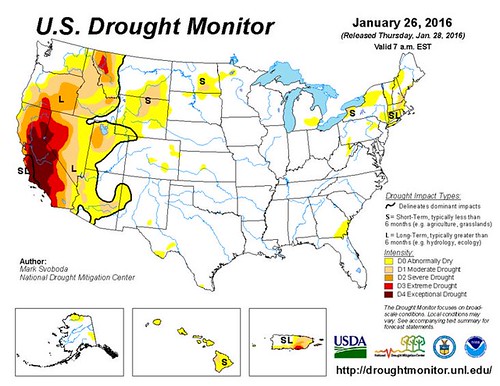
Drought patterns have always fluctuated and are expected to become increasingly dynamic in the years to come, making managing working lands profitably more of a challenge. Because specific actions for building resilience to drought vary with location and forest type, USDA is helping land managers connect with experts and find region-specific information and tools through the USDA Climate Hubs.
Recent historical drought events vary from region to region, with the western U.S. showing a trend toward dry conditions while trends in the East are more complex. So how can land managers mitigate the impacts of drought on their lands?
Drought affects forest and rangeland systems both directly and indirectly. Understanding these impacts is important for land owners as they manage their lands to produce desired goods and services in an increasingly variable climate.
The recently published report, “Effects of Drought and Forests and Rangelands in the U.S.: A Comprehensive Science Synthesis,” is a valuable resource to help working land managers understand the impacts of drought and build resilience on their lands. It explains how drought is characterized, drought impacts on forest processes and disturbances such as insect outbreaks and wildfire, and consequences for forest values and management considerations.
Moisture/drought dictates the state of most ecosystems; the amount of precipitation is a key driver that often determines what vegetation type is the most prevalent. So it is no surprise that drought is impacting our forests and rangelands in adverse ways. Not only does productivity decrease in times of drought, but the structure of the forest/rangeland can change as drought changes the competitive advantage of species, alters fire regimes and can make keystone species more susceptible to pests, pathogens and invasive species.
What options can help land managers? To answer that question the Climate Hubs have developed regional two-pagers to help land managers understand what the report means for them in their region and offers adaptation strategies to help them overcome regional vulnerabilities.
As drought continues to impact the nation’s forests, the USDA Climate Hubs and the USDA Forest Service are providing forest land managers with the most up-to-date science and tools to allow managers to maintain healthy and productive forests and rangelands now and for many years to come.
NOTE: For an interactive look at USDA's work in conservation and forestry over the course of this Administration, visit http://medium.com/usda-results.

